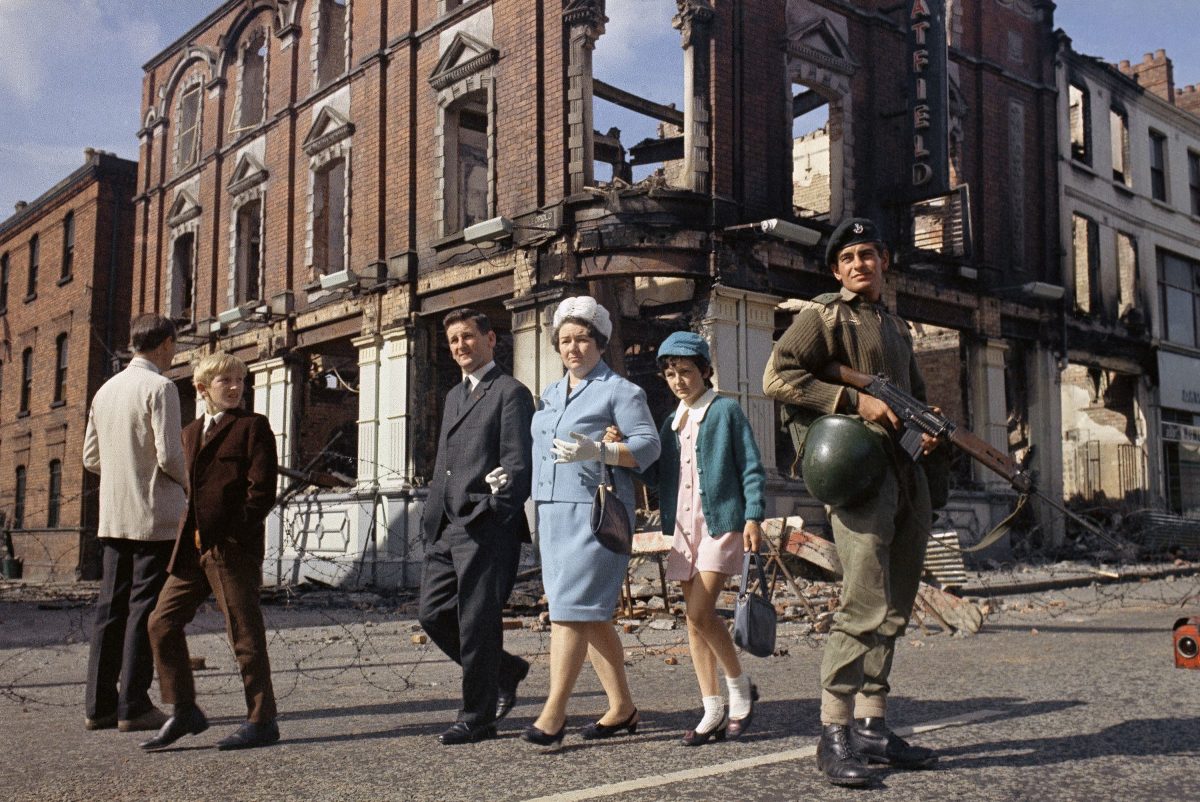
Local people walk past British troops on guard in the streets after violence in Northern Ireland in August 1969.
“The Troubles” refers to the three-decade conflict between nationalists (mainly self-identified as Irish or Roman Catholic) and unionists (mainly self-identified as British or Protestant). The period of violence was bookended by a civil rights march in Londonderry on 5 October 1968 and the the Good Friday Agreement on 10 April 1998. The main protagonists were republican paramilitaries such as the Provisional Irish Republican Army (IRA) and the Irish National Liberation Army (INLA); loyalist paramilitaries such as the Ulster Volunteer Force (UVF) and Ulster Defence Association (UDA); British state security forces – the British Army and Royal Ulster Constabulary (RUC); and political activists and politicians. It was a time when for many people around the world Northern Ireland was a place synonymous with murder, bombs, hit-squads, vicious bastards, shootings, victims of liberal bigots, prison and intimidation.
You can read about the history of Northern Ireland in a thousand books. Where to begin? Well, Lost Lives by David McKittrick
(All captions are original)
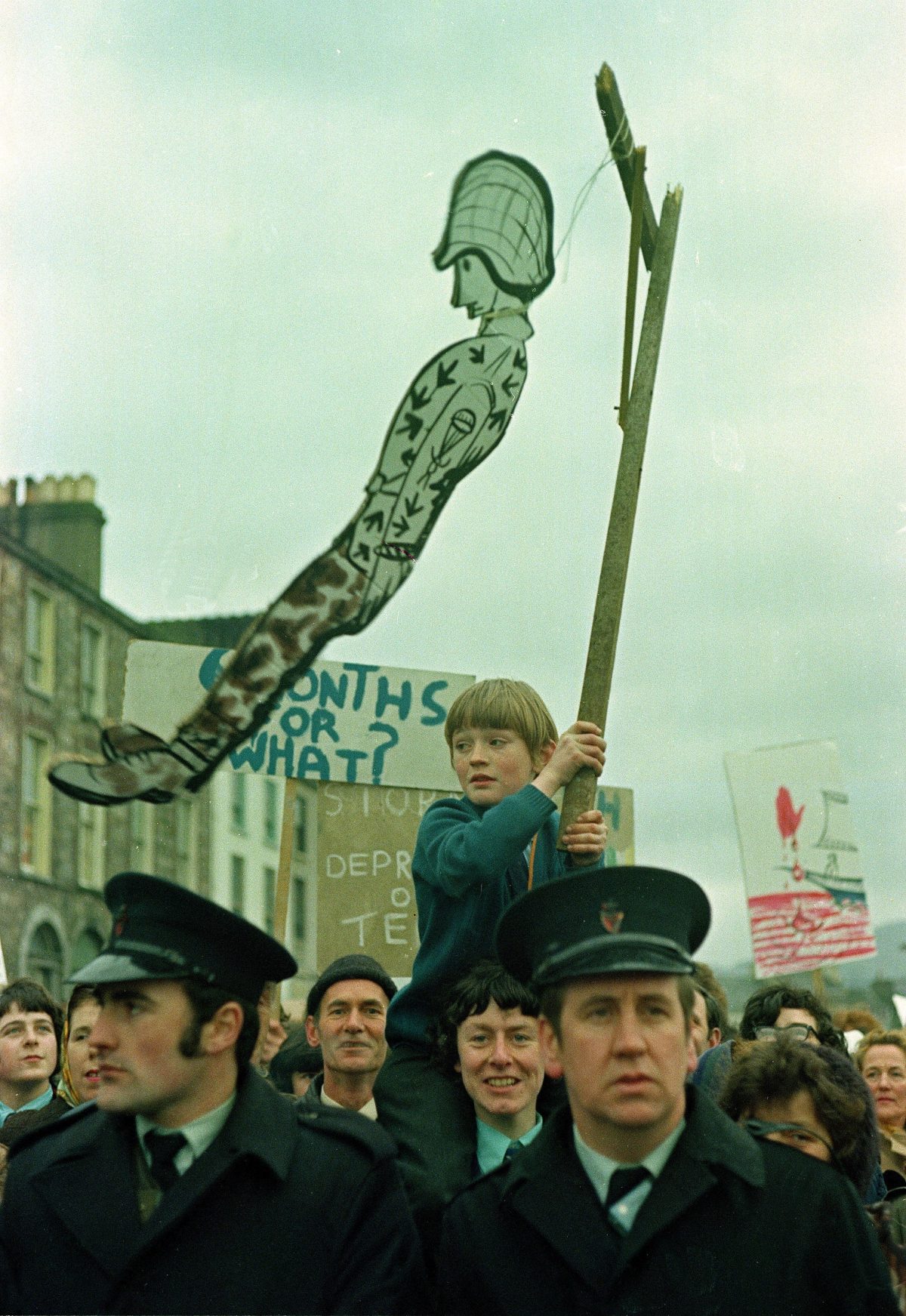
A young child, resting on a man’s shoulders, holds a hanging effigy of a British soldier during a march in Belfast, capital of Northern Ireland, Feb. 1972. The rally follows the deadly shooting of 13 demonstrators by British paratroopers during the civil rights march on Jan. 30, known as Bloody Sunday. (AP Photo/Michel Laurent)
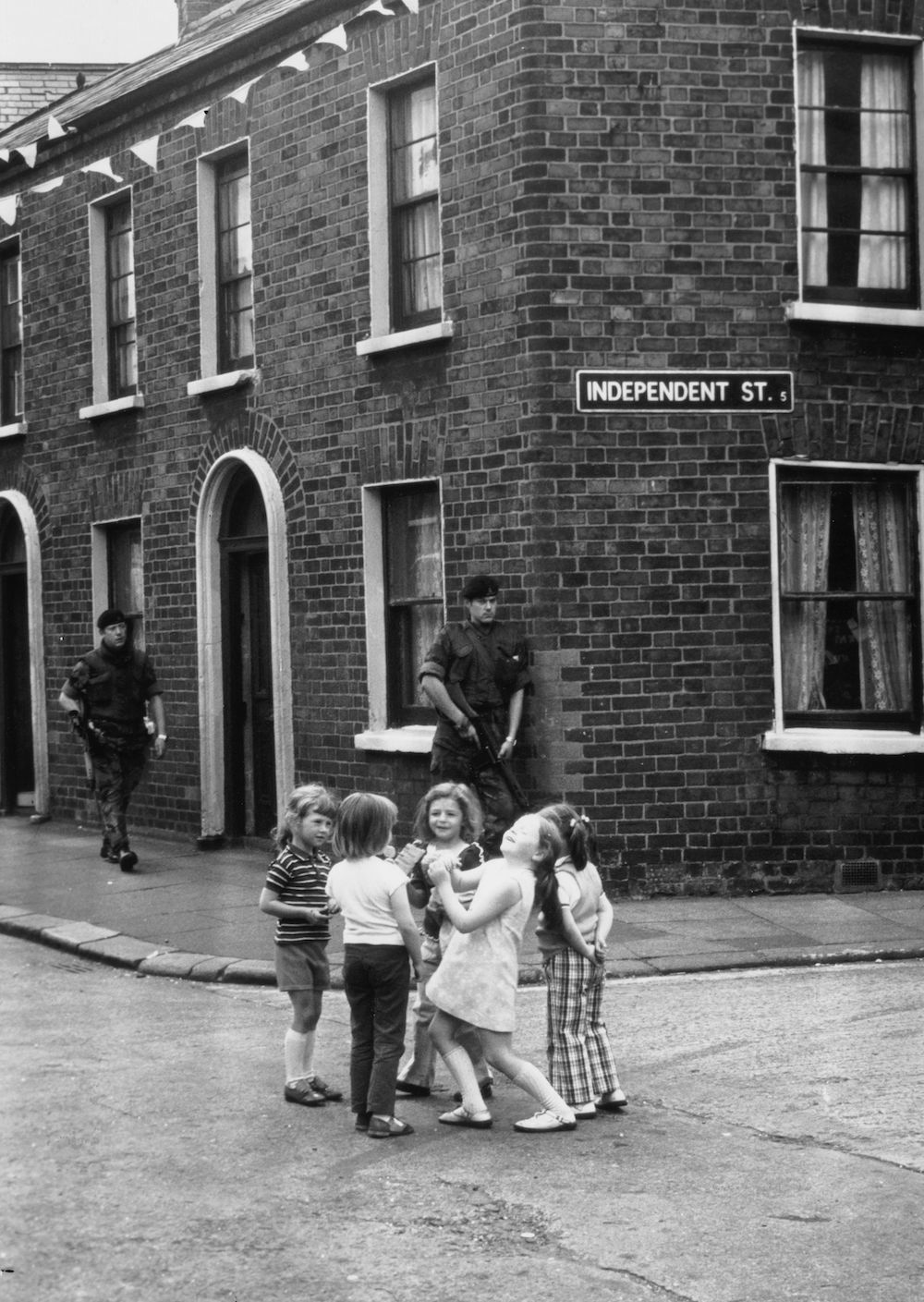
31st October 1974: Children play on the corner of Independent St in Belfast ignoring the armed soldiers on patrol. (Photo by Keystone/Getty Images)

July 1970: Children mocking an Army patrol in Belfast. (Photo by Malcolm Stroud/Express/Getty Images)

July 1970: Armed British soldiers impose a curfew on the Falls Road in Belfast. (Photo by Malcolm Stroud/Express/Getty Images)
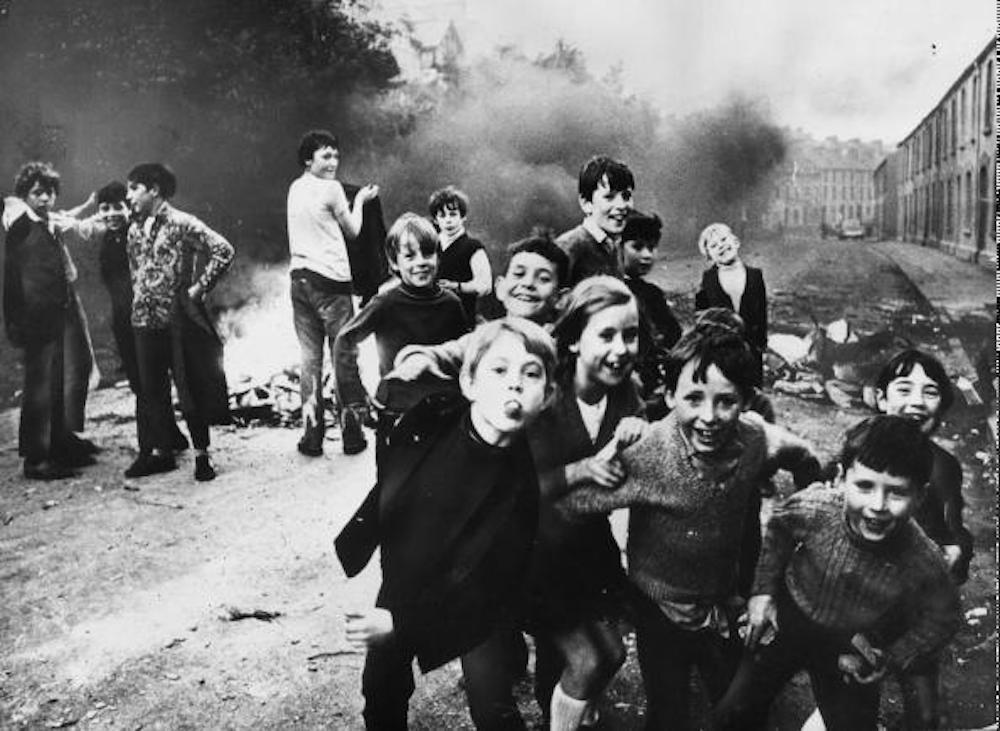
7th December 1971: Children jeer at British soldiers while a fire smoulders in the street behind them. (Photo by Keystone/Getty Images)
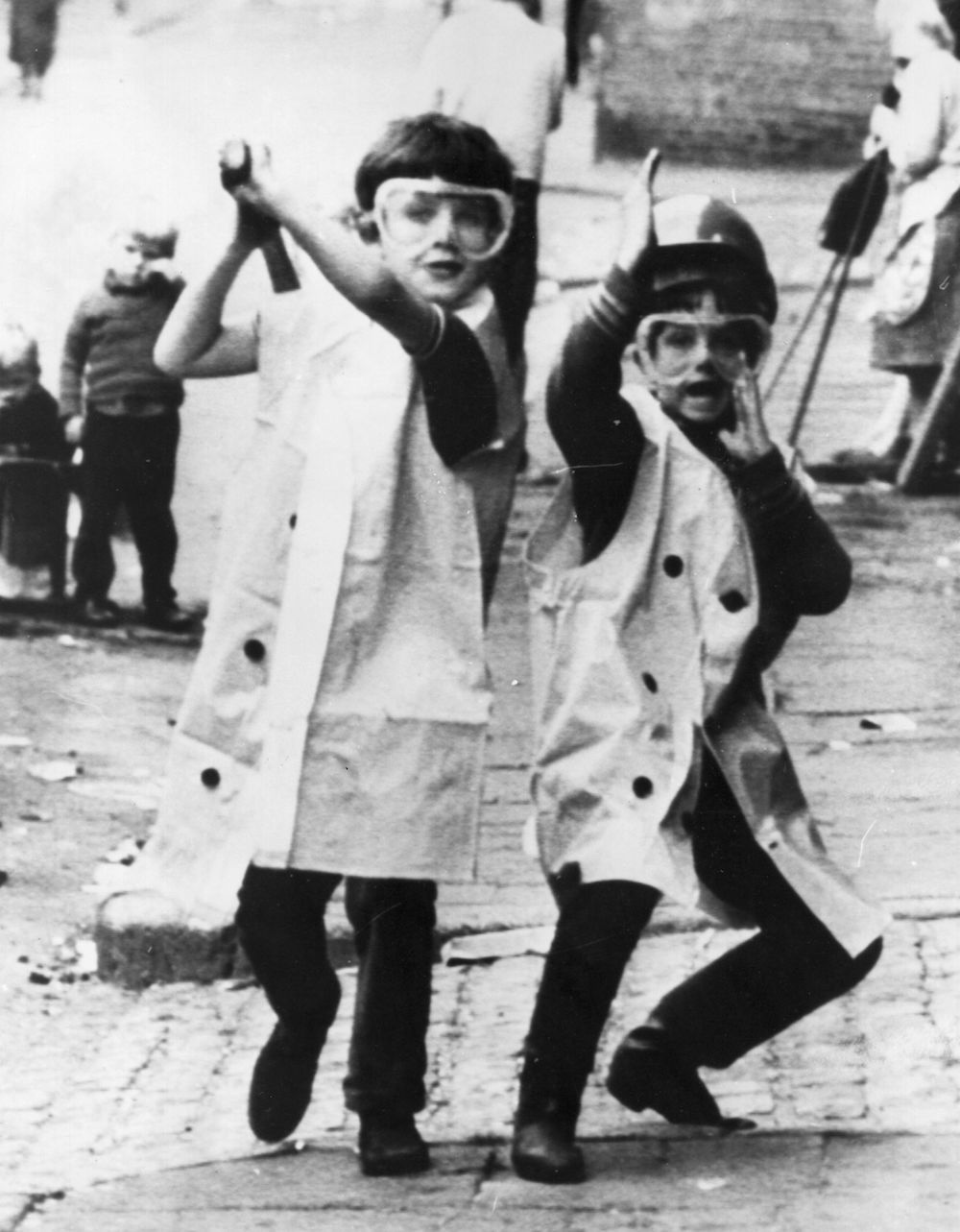
12th August 1971: A view of two children in the crowded market area of Belfast re-enacting the shooting of four men the day before. (Photo by Central Press/Getty Images)
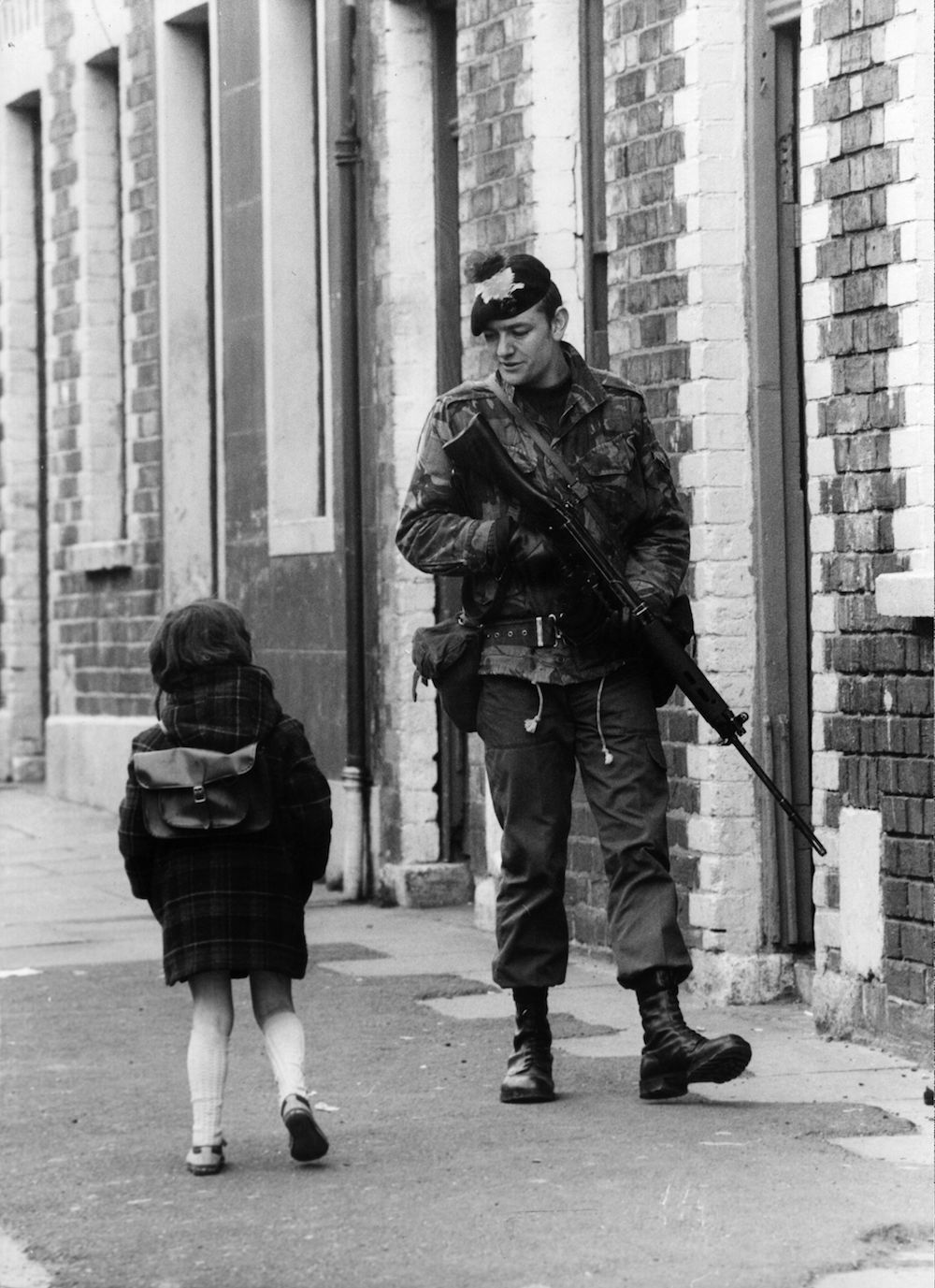
13th May 1981: A Belfast girl chats to a soldier out patrolling the streets in the Falls Road area. (Photo by Central Press/Getty Images)
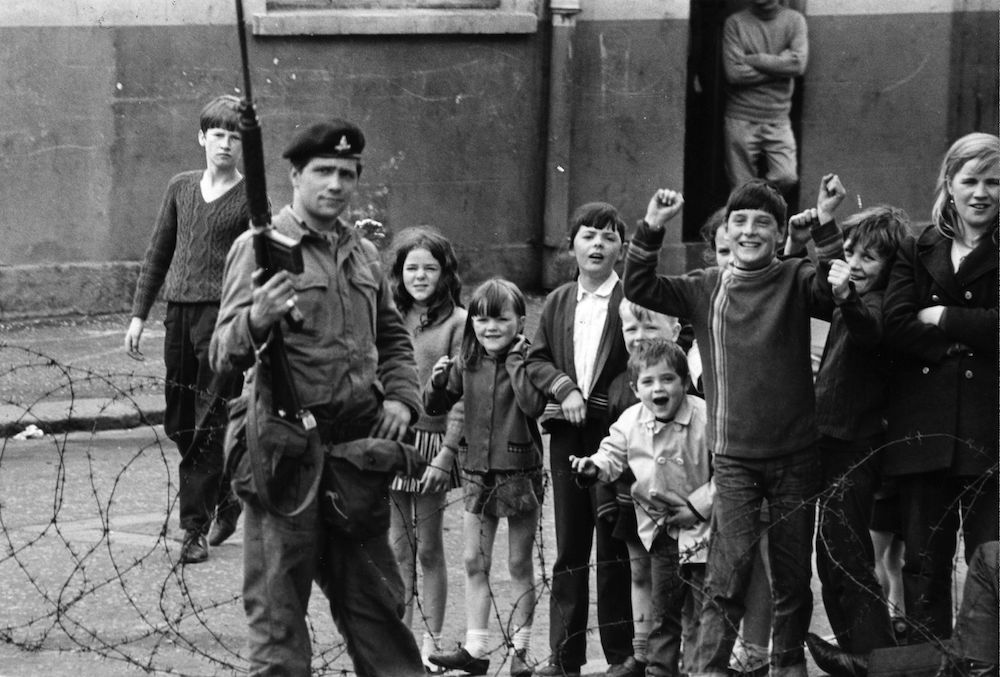
July 1970: Armed British soldiers impose a curfew on the Falls Road in Belfast. (Photo by Express/Express/Getty Images)
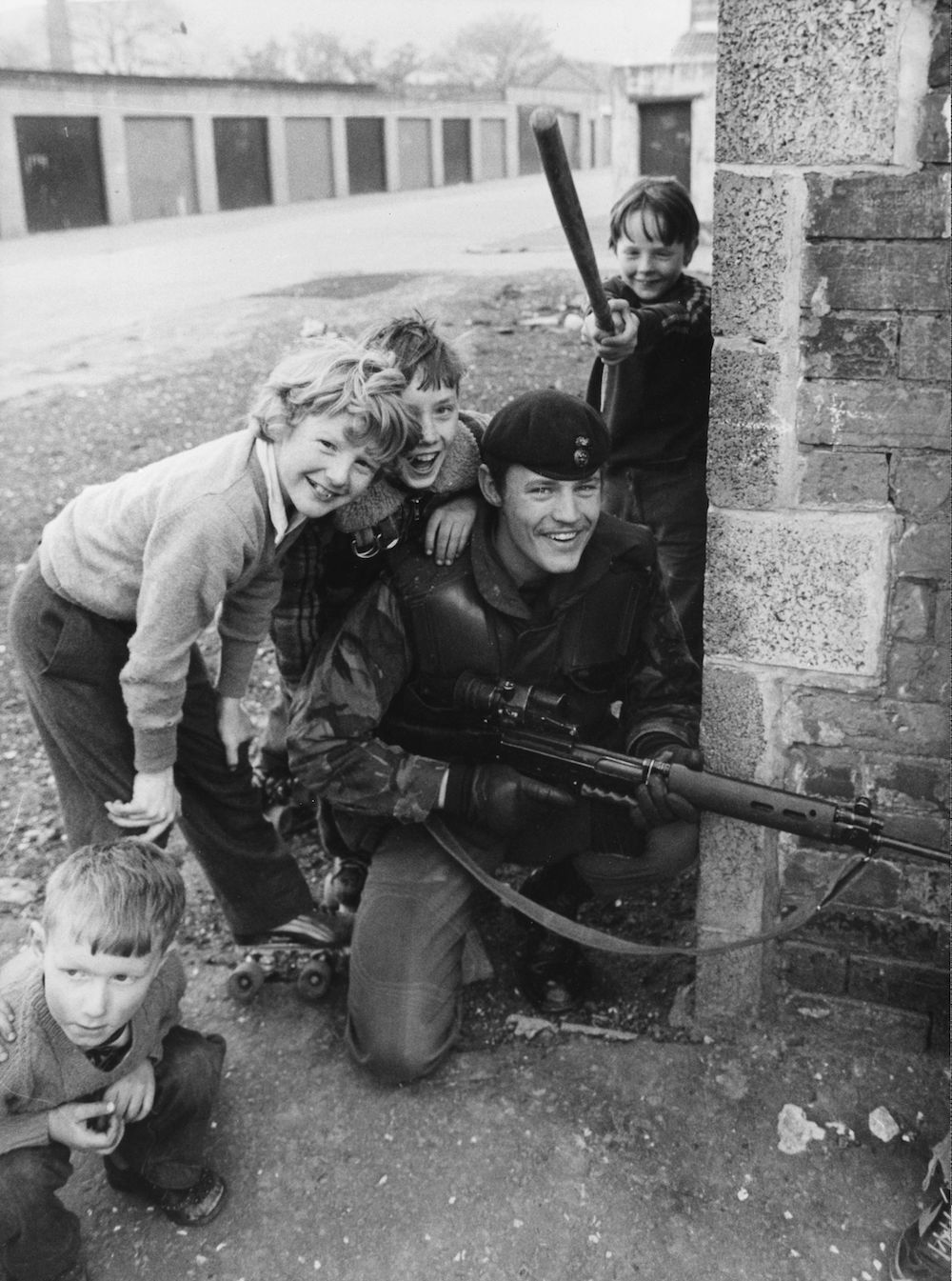
13th May 1981: Schoolboys in a Catholic area of Belfast at play on the streets near a British soldier on patrol. (Photo by Rob Taggart/Central Press/Getty Images)

Masked members of the loyalist paramilitary organization, the Ulster Defence Association (UDA) outside the Shankhill Road Post Office in Belfast, Northern Ireland, June 1972. (Photo by David Lomax/Keystone/Hulton Archive/Getty Images)

Royal Highland Fusiliers soldiers at a security checkpoint in Belfast. (Photo by Chris Ware/Getty Images)

Young children playing with the wreckage of a burnt out car in Belfast. (Photo by Three Lions/Getty Images)
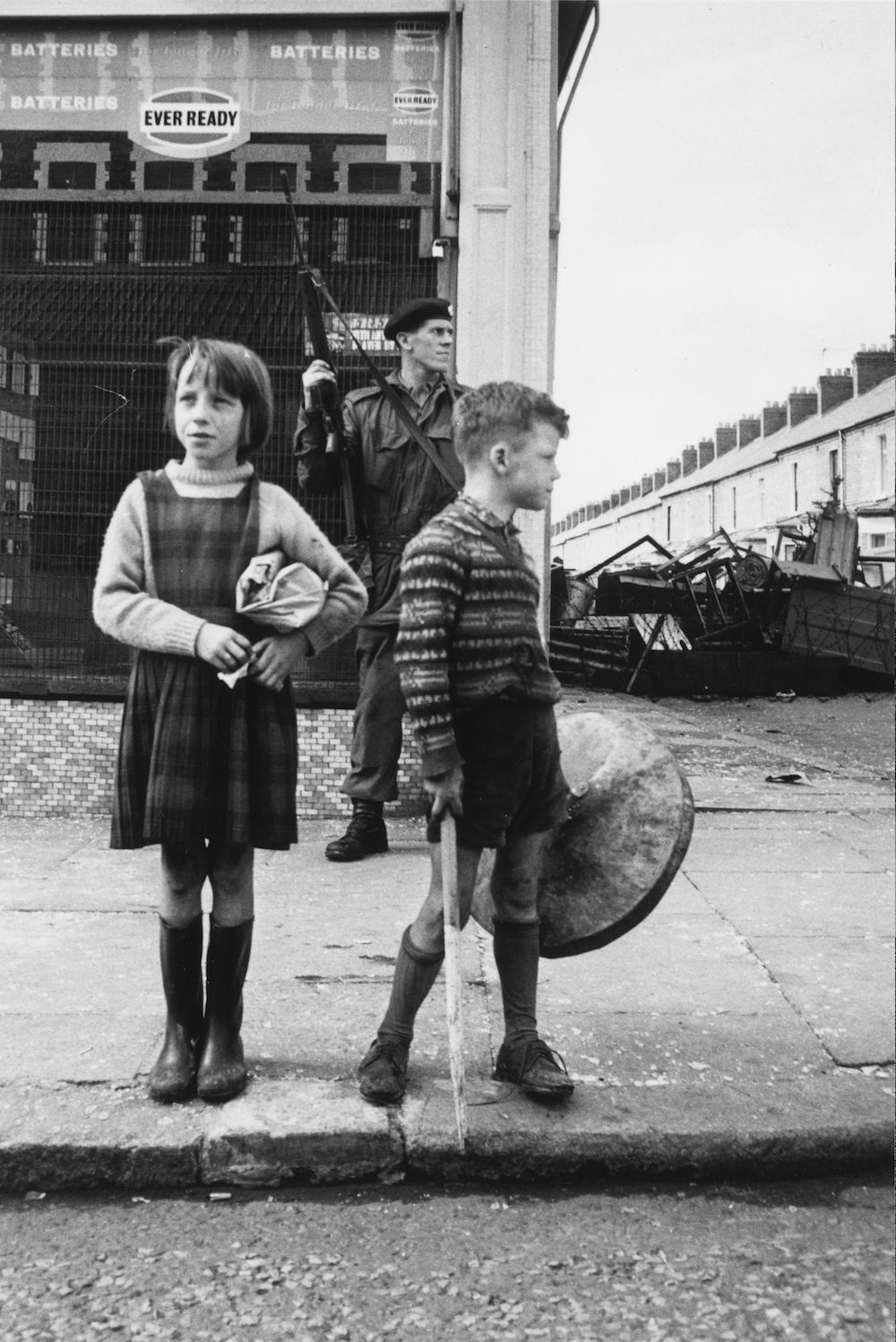
17th August 1969: A British soldier stands on patrol at a street corner in Belfast, while two children mount their own kerbside guard. (Photo by Wesley/Keystone/Getty Images)
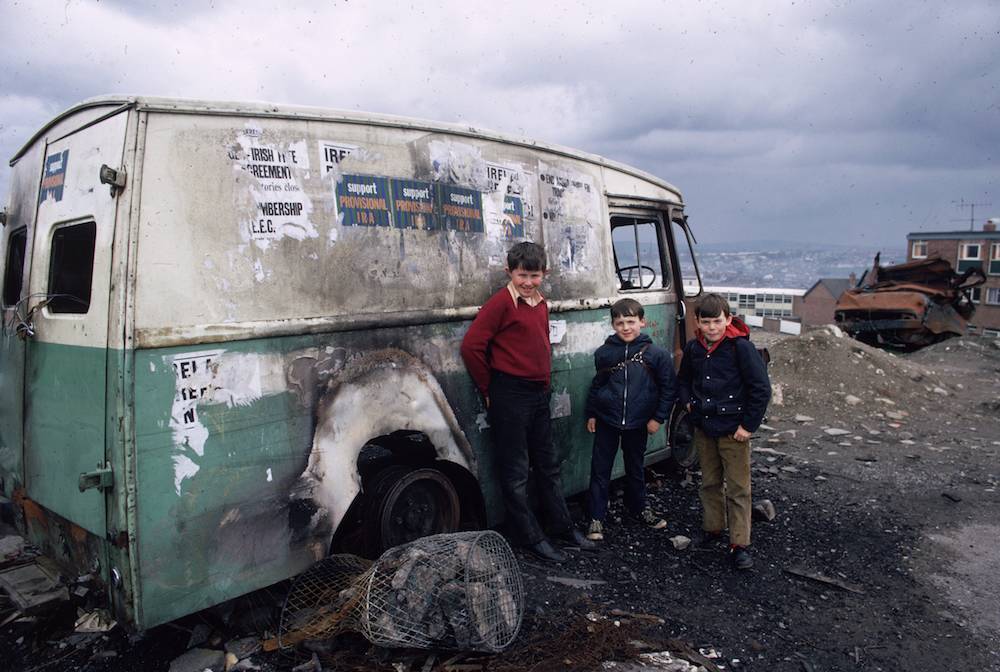
circa 1975: Three children gather by a burnt out van plastered with IRA posters, in the predominantly Catholic Bogside area of Londonderry. (Photo by Keystone/Getty Images)
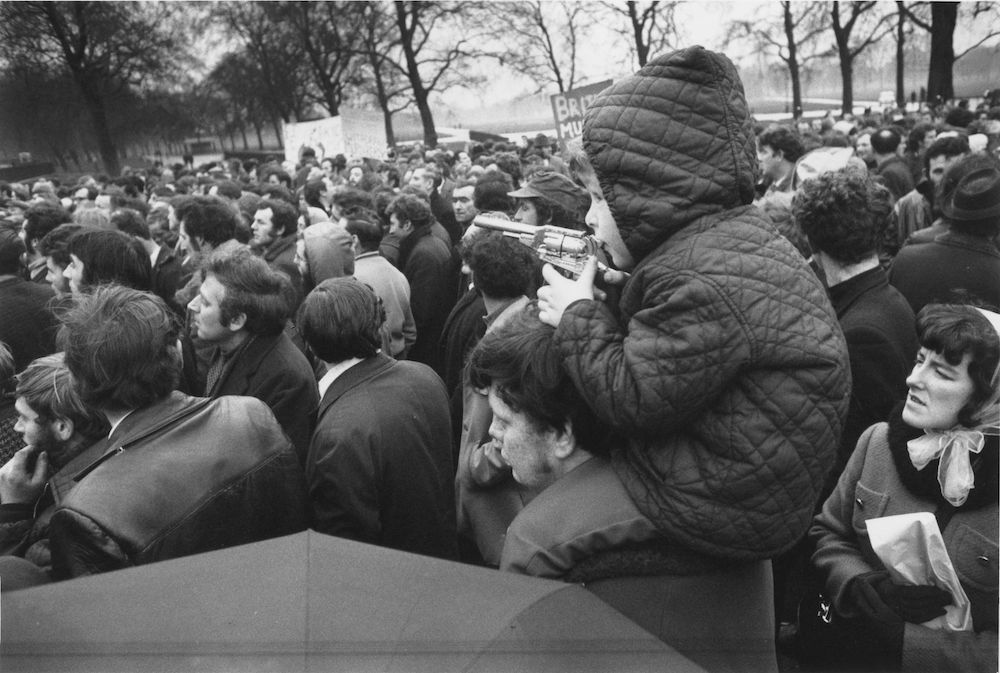
2nd February 1972: A demonstration in London’s Hyde Park against the ‘Bloody Sunday’ massacre when British Paratroopers shot dead 13 civilians on a civil rights march in Derry City. (Photo by Central Press/Getty Images)
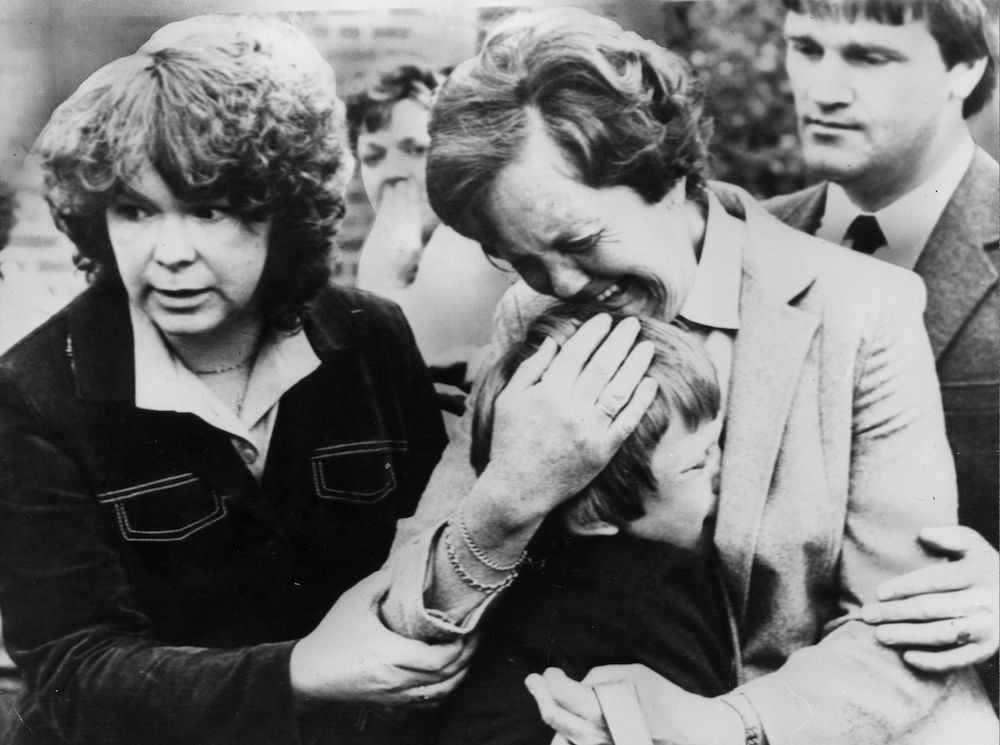
A broken-hearted mother comforts her young son Darren at the funeral of his brother, 28 year old Constable G Martin, who was blown up by a booby-trapped lorry in Belfast. (Photo by Keystone/Getty Images)
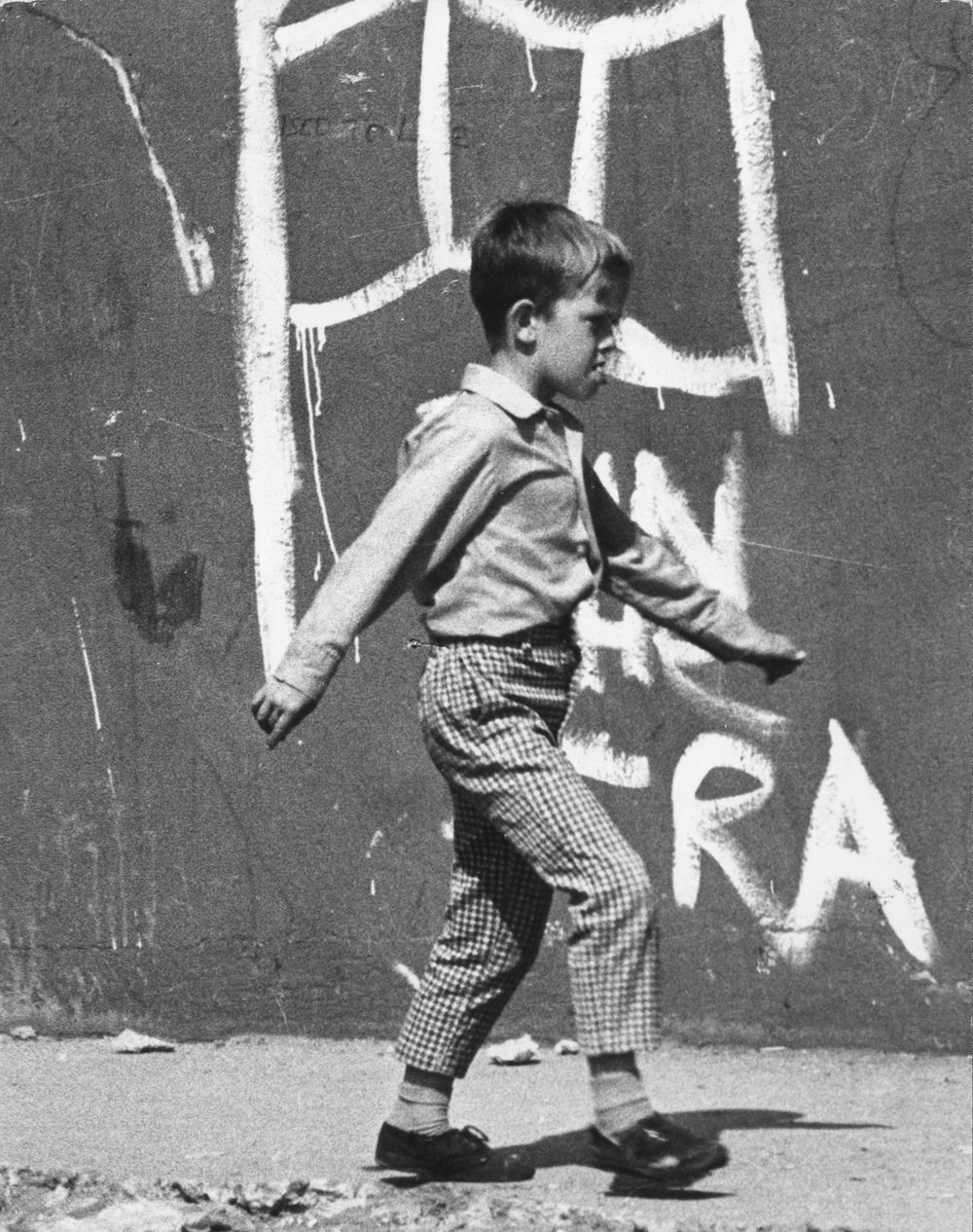
28th October 1971: A young boy walking past nationalist graffiti in Ulster. (Photo by Fulvio Grimaldi/Keystone Features/Getty Images)
Would you like to support Flashbak?
Please consider making a donation to our site. We don't want to rely on ads to bring you the best of visual culture. You can also support us by signing up to our Mailing List. And you can also follow us on Facebook, Instagram and Twitter. For great art and culture delivered to your door, visit our shop.










